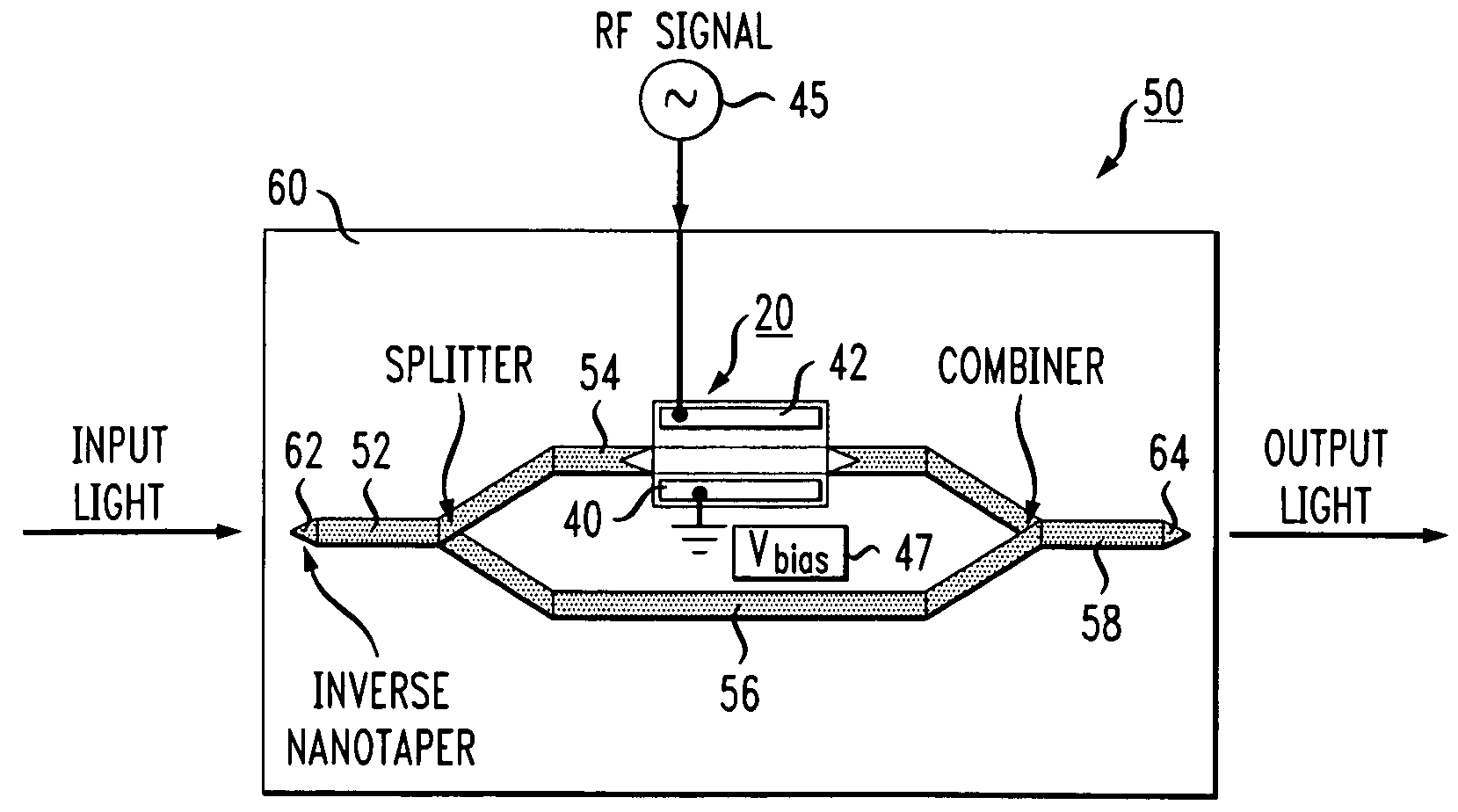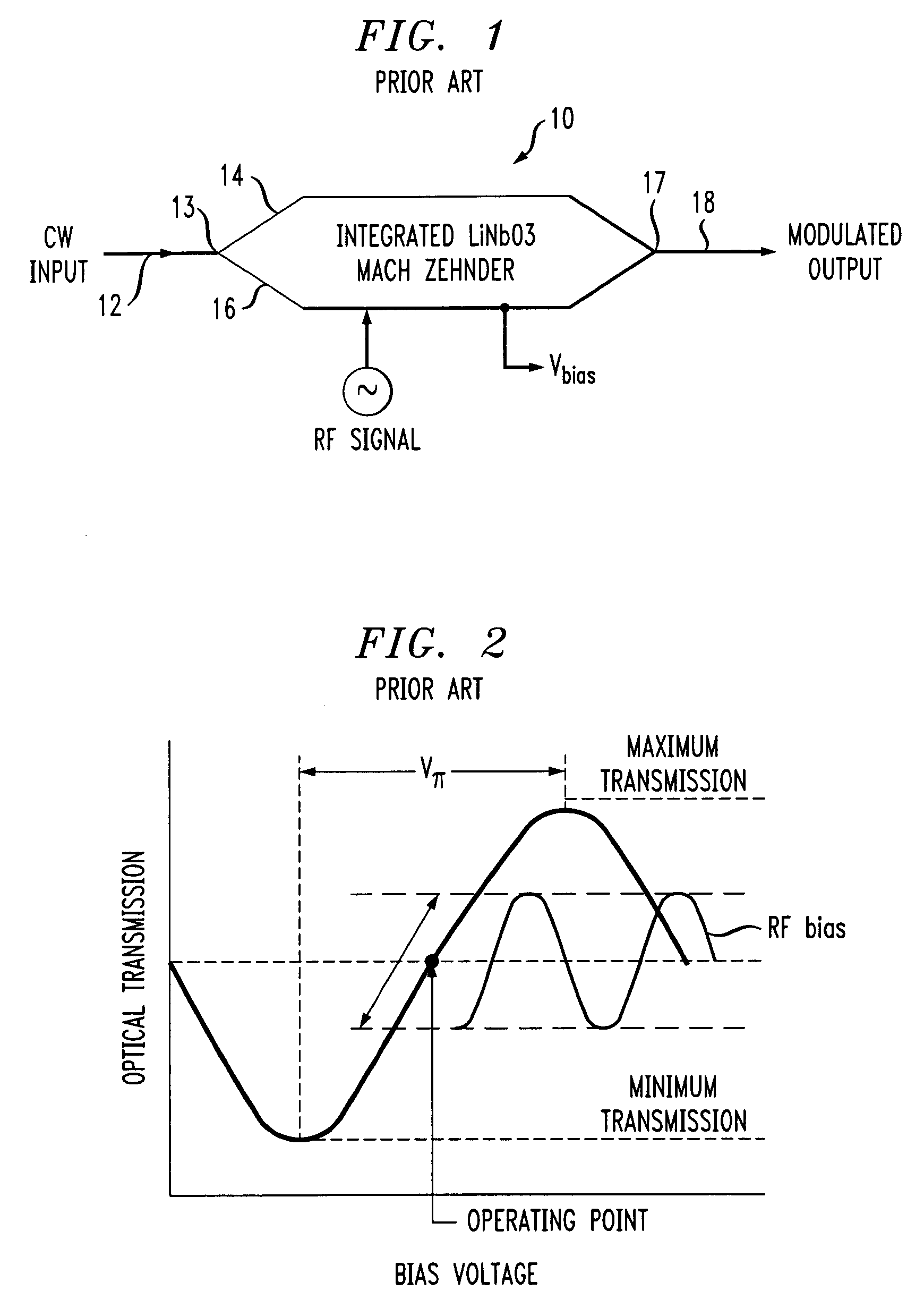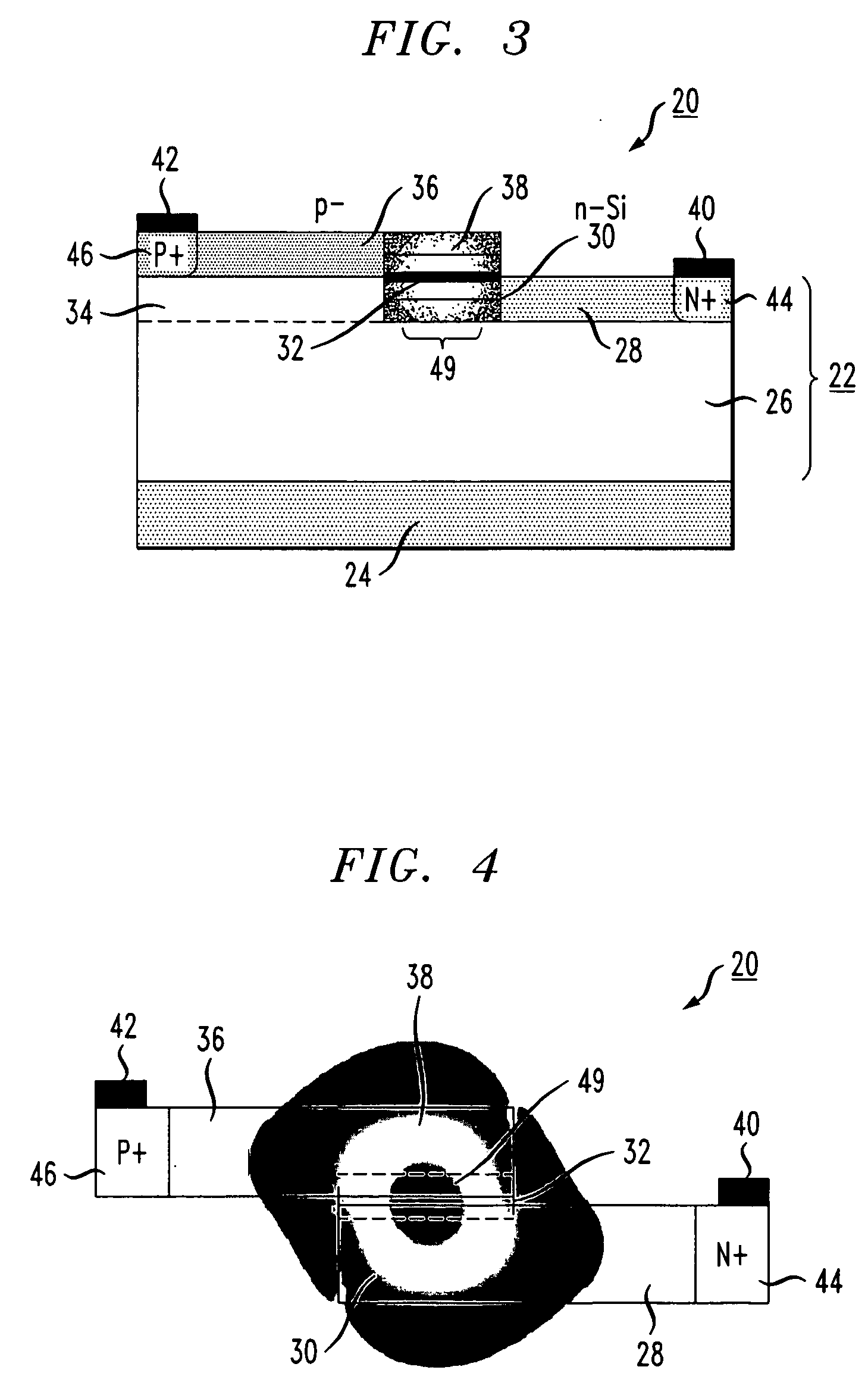Silicon-based optical modulator for analog applications
an optical modulator and silicon-based technology, applied in the field of optical modulators, can solve the problems of unsuitable for many current applications which require high density integration, and a high degree of linearity, and achieve the effect of reducing the size and cost of the complete system
- Summary
- Abstract
- Description
- Claims
- Application Information
AI Technical Summary
Benefits of technology
Problems solved by technology
Method used
Image
Examples
Embodiment Construction
[0030]FIG. 1 illustrates a conventional prior art method of transmitting information on an optical carrier. A continuous wave (CW) optical input is coupled into input waveguide 12 of a Mach-Zehnder interferometer (MZI 10) and is then split at an input Y-branch 13 to thereafter propagate along a pair of parallel optical waveguide arms 14 and 16. Parallel optical waveguide arms 14, 16 form two phase modulators which operate in the well-known push-pull manner. In this prior art arrangement, phase modulation is made possible due to the electro-optic properties of the LiNbO3 material used for the modulator. Optical signals from the upper waveguide path 14 and lower waveguide path 16 are recombined at the output Y-branch 17 and then propagate along output waveguide 18. If the optical beams from the two paths 14, 16 arrive in phase, light will be guided out of the MZI 10, and vice-versa (that is, if the two signals arrive 180° out of phase—cancelling each other—no light will be coupled int...
PUM
 Login to View More
Login to View More Abstract
Description
Claims
Application Information
 Login to View More
Login to View More - R&D
- Intellectual Property
- Life Sciences
- Materials
- Tech Scout
- Unparalleled Data Quality
- Higher Quality Content
- 60% Fewer Hallucinations
Browse by: Latest US Patents, China's latest patents, Technical Efficacy Thesaurus, Application Domain, Technology Topic, Popular Technical Reports.
© 2025 PatSnap. All rights reserved.Legal|Privacy policy|Modern Slavery Act Transparency Statement|Sitemap|About US| Contact US: help@patsnap.com



